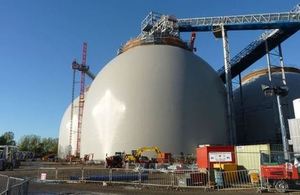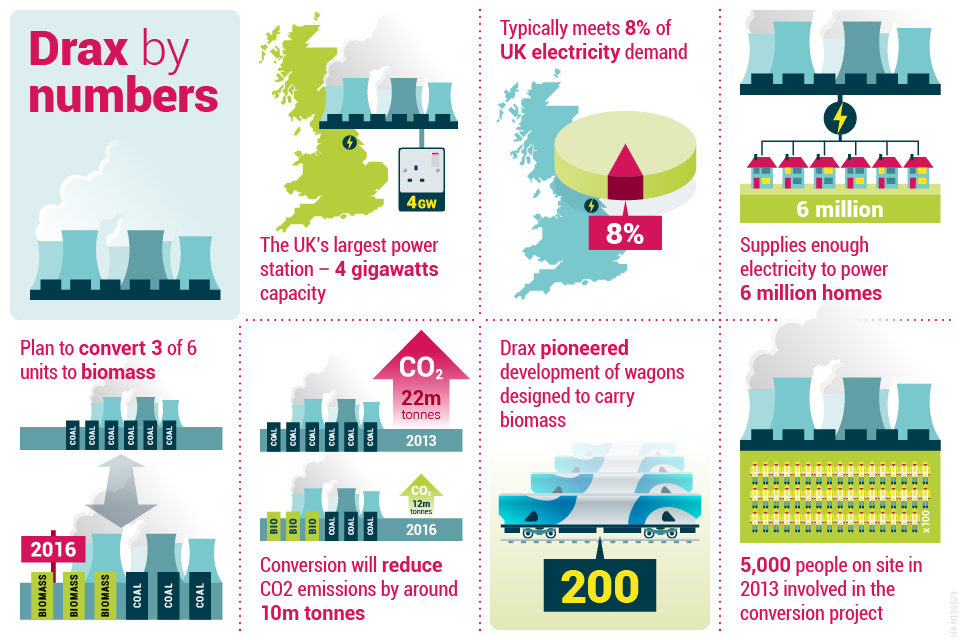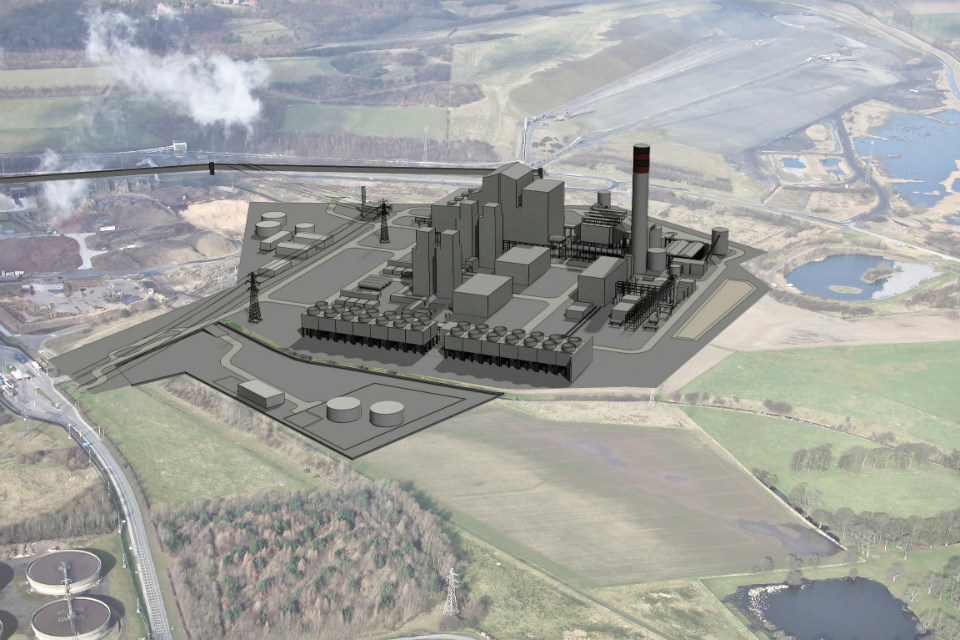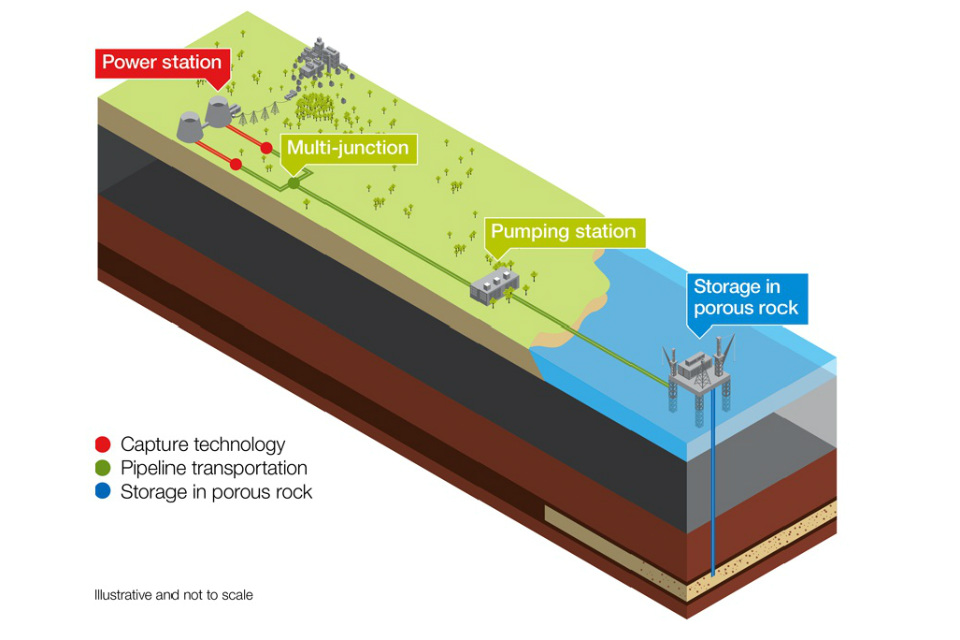Drax and the White Rose CCS Project
Edward Davey opened the Drax coal-to-biomass conversion plant today, and announced the Government was awarding FEED study funding to further the White Rose CCS project, also based at the site.

The new biomass domes at Drax
Edward Davey is at Drax today opening the new biomass facilities and announcing further funding for the White Rose CCS project:
Britain’s largest coal-fired power station has become one of Europe’s biggest renewable electricity generators today, with the potential for future generation on the site to be based on truly clean coal.
Energy and Climate Change Secretary Edward Davey opened the Drax coal-to-biomass conversion plan, and announced the Government was awarding funding to further the White Rose CCS project, also based at the site.
Ed Davey opens Drax and announces White Rose
Converting from coal to biomass
Drax plans to transform itself into a predominantly biomass-fuelled generator through burning sustainable biomass in place of coal, and in April 2013 it finished converting one of its generating units to biomass. It plans to convert a further two units by 2016.
The new £700 million planned conversion project will burn wood pellets rather than coal, which Drax calculate will reduce carbon emissions by 80 per cent compared to coal. The facilities will provide enough low carbon power to the equivalent of around 1 million homes and will help to safeguard 1,200 jobs and many more in the supply chain and in local communities.

Drax by numbers
The White Rose CCS Project
The Government has announced it intends to award a multi-million pound contract for detailed design and planning, known as a FEED study, to Capture Power Limited for the White Rose CCS Project, which includes the Yorkshire-Humber CCS Trunkline, a carbon dioxide (CO2) transportation and storage solution to be undertaken by National Grid Carbon Limited.
The White Rose project involves Alstom, Drax Power and BOC who have formed “Capture Power Limited”; and National Grid.
The White Rose proposal is to build a new state-of-the-art 426MWe (gross) clean coal power plant with full carbon capture and storage, bringing clean electricity to over 630,000 homes and capturing approximately 2 million tonnes of CO2 per year. This will link into the planned development of a CO2 transportation and storage infrastructure which would have capacity for additional CCS projects in the area. In total the White Rose proposal represents potential investment in the region of c.£2bn and up to 2,000 jobs.
Government is working with industry to create a new cost-competitive CCS industry in the 2020s. Our support for the development of CCS includes:
- a £1 billion commercialisation competition to support practical experience in the design, construction and operation of commercial-scale CCS
- a £125 million, 4-year co-ordinated research, development and innovation programme
- reform of the UK electricity market so CCS will be able to compete with other low-carbon energy sources

White Rose model illustration
How CCS works
CCS allows the safe removal and permanent storage of carbon dioxide emissions from coal and gas power stations, as well as from industrial processes.

If developed at scale CCS could:
- allow the safe removal and permanent storage of carbon dioxide emissions from coal and gas power stations
- remove and permanently store emissions from large industrial sources such as steel or cement factories
The technologies used in CCS (capture, transport and storage) aren’t particularly new or unique. They have been used for many years individually (notably in the oil and chemical sectors) but to to bring down costs and allow CCS to be more widely used, the full chain of capture, transport and storage needs to be built and operated on a commercial scale at power stations. Boundary Dam in Canada is likely to be the first coal power station in world to operate with commercial scale CCS.